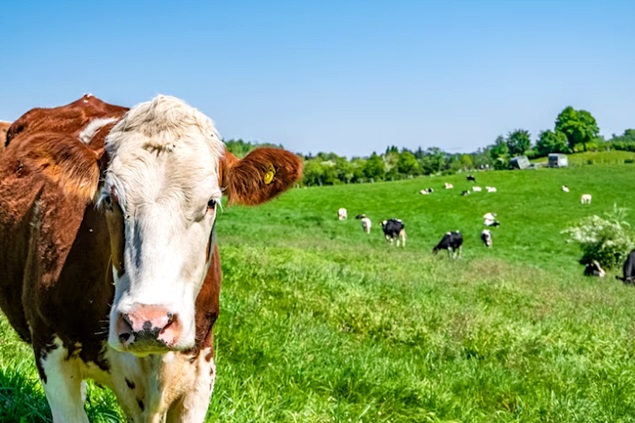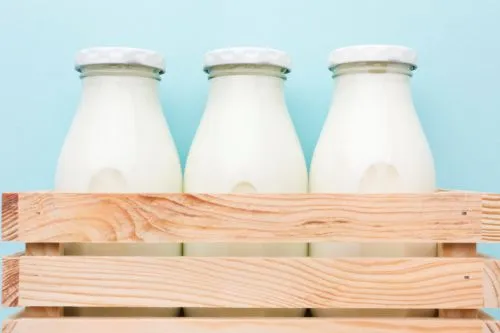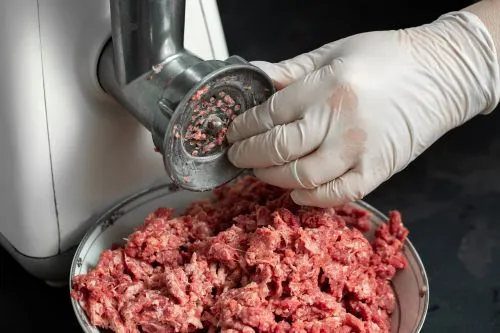
Although studies have examined the effects of various environmental factors on cow performance, the effects of housing type and facilities have rarely been considered. Here, however, is a review of the effects of shelter design and microclimate on the nutritional requirements of cows, fertility, milk production, immunity, and body condition, according to DairyGlobal.
Milk production in confinement
A study was conducted to compare feed utilization and milk production of cows kept in confinement and free-stall housing. Maintenance requirements were 5-10% lower in tie-stall barns than in free-stall barns, probably due to reduced cow movement under the tie-stall system.
As a result, milk production was better in the tie-stall barn compared to free-stall housing (20.2 kg versus 17.7 kg), as a significant portion of the feed is used for productive purposes in this case.
From the analysis of the most common conditions caused by the housing system, it is evident that cows in tie-stall barns have a higher incidence of mastitis but less frequent hoof disorders and skin changes compared to cows in free-stall housing.
Additionally, a high level of dirtiness of the rear feet and udder was found in free-stall housing, probably due to increased floor moisture and lack of daily cow hygiene routines.
However, it should be noted that factors that make cows susceptible to different disorders and body conditions are not specific to housing types. Minimal incidence in a particular housing type can be achieved with proper stocking density and appropriate health and biosecurity programs.
Flooring
Another study found that covering the floors of free-stall barns with soft rubber mats that mimic pasture soil helps achieve the following advantages compared to solid concrete floors:
- Animals tend to stand and rest on the soft floor for up to 14 hours per day. This helps improve blood circulation in the udder and, therefore, increases milk production.
- Soft flooring helps increase estrus detection efficiency by increasing mounting rates; on hard floors, these rates are lower due to fear of slipping.
- Lactation persistence (the rate of decline in milk production after reaching peak milk production) was better for slatted or rubber flooring (-0.86) compared to concrete flooring (-0.97).
- Soft floors allow unlimited movement of animals within the barn. This helps improve blood circulation in the living tissue of the hooves, thereby providing more protection for the hooves and enhancing the capacity of their outer edges to bear most of the animal's weight during walking.
Cooling system
Studies on air conditioning have shown a 9.4% increase in milk production and 11-20% increase in fertility. However, the benefits of increased milk production and fertility have not in many cases been sufficient to offset the operating costs of the unit.
Misters and sprayers can also be used to increase heat loss through evaporation. Results with these structures have shown improved animal performance. However, there have been many cases of hoof disorders and excessive flies when misting was used.
Sprinklers are sophisticated structures and should be carefully maintained when using them. If the water flow is blocked for any reason, the animals may not readjust to their environment, and many problems can arise. If the system is automated, increased costs would be added to these disadvantages.
Ventilation system
A mature dairy cow will exhale 15-19 liters of water per day in the form of water vapor and produce 600-700 watts of heat. Ventilation systems continuously remove heat, moisture, and odors created by animals and replenish the supply of oxygen by introducing drier and cooler outside air.
Proper air exchange also removes gases such as ammonia, hydrogen sulfide, and methane, which can be harmful to both animal and human health. Naturally ventilated barns rely on wind and temperature differences to provide adequate airflow. However, the effectiveness of natural ventilation depends on factors such as barn orientation, roof design, and the presence of openings or vents.
Mechanical ventilation systems, on the other hand, use fans to circulate air within the barn. These systems can provide better control over air movement, temperature, and humidity. Proper ventilation helps maintain a comfortable environment for cows, reducing heat stress and improving overall performance.
Feeding facilities
Competition between dairy cattle for feed space can cause stress, production losses and health problems. Providing adequate feed space (70–75 cm per cow) can help alleviate these problems. Also, the surface of the feeding table must be easy to clean and kept clean.
It should be noted that silage is an acidic feed and will erode plain concrete feed table surfaces. Surfaces such as tile, polyethylene, stainless steel, and even some concrete additives are acid resistant and will keep the feeder table smooth after years of use.
The feed barrier, which could be a spike post, should allow cows easy access to the feed in front of it. Cows can exert 225 kg of pressure against the barrier to reach feed, while only 100 kg of pressure can cause tissue damage to their neck and shoulders.
The rail must be high enough for the animals to easily reach under it for their feed. This height is often set at 120 cm above the front legs of the cows and 10-20 cm in front of the feed board.
Noise control
Cattle can tolerate moderate levels of noise and can easily adapt to an intensity level of 60-90 dB. Above this level, however, animals are severely affected in terms of food intake, metabolic processes, endocrine system, reproduction, lactation and immunity.
Such problems could be alleviated by installing sound devices or resonators or by other means recommended by a qualified acoustic specialist. This is especially important in cases where the farm is located in an area of aircraft overflight or where power generators are used to protect against power failure.
The value of cow comfort
When cattle were domesticated about 10,000 years ago, they were probably hardy animals lacking extensive comfort and living in challenging environments. Today's dairy cows are more like high-functioning athletes than the tough, rugged creatures tamed by our distant ancestors. Although they perform much higher than their predecessors, they can be more sensitive to negative management or environmental factors.
Scott Hartwell, CEO and owner of Wisconsin-based Advanced Comfort Technology, has dedicated much of the past 20-plus years to improving the comfort level of dairy animals. His company's many lines of waterbeds, mattress covers, rubber flooring and installation hardware are aimed at keeping cows happy, relaxed and healthy.
Advanced Comfort Technology's technologically sophisticated products include a dual-chamber waterbed, with the front chamber to cradle the knees and the larger rear compartment to float the body. Latex foam mattresses can also be installed to cover beds for improved grip and extra confidence in your feet.
Hartwell strongly believes that because we harvest a healthy resource for human consumption from these essential animals, they deserve more than adequate supplies of food, water and a roof over their heads. These respected animals deserve comfort like these waterbeds and mattresses. As an added benefit, comfort helps optimize milk production, improve health and increase overall herd contribution.
Factors affecting health
"Comfort is the umbrella under which a lot of our language is focused because it refers to cows in stalls and barns," says Hartwell. "But what are we trying to achieve when we think about it?"
While variables like breeding, rations and water all play a role, he says optimal sleep time that supports leg health is key.
Cows need to experience periods of sustained rest throughout the day to maximize production, and uncomfortable bedding only provides restless sleep that compromises leg health.
Foot health
"A cow of approx. 725 kg, on a poor bed, will be restless and will not lie down as it should. Even when it does, it will move more. All this affects her ability to produce according to her capacity”.
Hartwell explains that a surface must ensure good leg health, as lameness is a fast pass to leaving the farm:
"If it's lying on an uncomfortable surface and it results in damage to the leg, that creates a problem. The owners are forced to decide whether to treat her to keep her in the herd, which means they can't milk her or send her off the farm, which has a higher cost."
A healthy udder
Udder care is also a component of health and comfort. Similarly, foot problems could affect health if a cow becomes susceptible to mastitis and milk quality is affected, its production is reduced. She will need treatment time where her milk cannot be stored, the quality is low and the capacities are hindered.
Longevity
Longevity is an additional aspect that Hartwell doesn't think gets enough recognition. If a cow reaches her fourth or fifth lactation, she is producing profit at a high level. The years to bring it up to full production capacity have already been recouped. At this point, he imagines farmers have to ask themselves if an older herd is part of the strategy, or if they should turn animals over more quickly.
Comfort elements
While he acknowledges that Advanced Comfort Technology provides beneficial equipment to the dairy industry, he points out that many marginal factors also add value to the comfort umbrella. He believes value can be added to the industry when farmers look at their business as a series of systems.
Pieces of this valuable puzzle include shelter dimensions, ventilation, lighting, access to clean and fresh water, floor condition, resting surface and space size, stall composition and dividers, loops and related stall equipment setup.
"All these elements go into this big bucket of cow comfort," he adds. "And its comfort is a mechanism to be able to optimize the productivity of the entire herd."
The stress
In addition, Hartwell believes that employee training in handling and grazing is critical. Workers who move animals by yelling, whistling and banging into crates introduce stress and reduce the cow's ability to function in a healthy way, similar to how people who work in stressful conditions do not normally maximize potential.
Fortunately, it has been proven that if we limit stress, cows are better able to contribute to the bottom line: "Cows able to exist in their environment, moving freely at a pace that doesn't make them feel rushed, will be less stressed with lower levels of cortisol in their system. They will be able to stay healthier and perform better."
Additionally, dairy cows were bred to be milked constantly because they need the relief that milking brings. They crave routine and will quickly learn to voluntarily move to the salon.
"The question is, are we moving them in a way that introduces unnecessary stress, and if so, what is the cost? Unfortunately, there is no precise mechanism to measure this. We don't have a way to provide a cost-benefit analysis to confirm that if we stop screaming, we'll get X reward.” Fortunately, it has been proven that if we limit the stress, the cows are better able to contribute to the bottom line.
Keeping employees happy
Hartwell also recommends that manufacturers do everything they can to ensure that employees are happy and satisfied in their roles. Regardless of their chosen profession, when individuals find fulfillment in their work, they will serve the industry in a more fulfilling way.
"Whether that means fair compensation that meets financial needs and reduces financial pressures, cements individual responsibility and ownership of areas, or training protocols and procedures to help clarify tasks, employee satisfaction can be affected in many different ways. .”
He encourages farmers to go beyond the paycheck, giving them the tools to be successful in their assigned roles and recognizing them for their individual contributions to the team. "A handshake or a direct appreciation for the work they do is very good for people."
Hartwell believes that the systematization of tasks is an element of employee fulfillment, and its planning and organization facilitate employee success:
"As much as the term factory farming is cast in a negative light, I think it's useful to embrace it in a positive way, looking at a farm as a type of production process," he said.
"When we consolidate it as a structure, we ultimately reduce time, material waste and the incidence of failures, all while improving quality and performance. We are lucky to work in an industry full of so many good people who come together to create a viable and profitable industry, but also one where cows are respected and cared for in the comfort they deserve, resulting in the aimed at improving their health".




